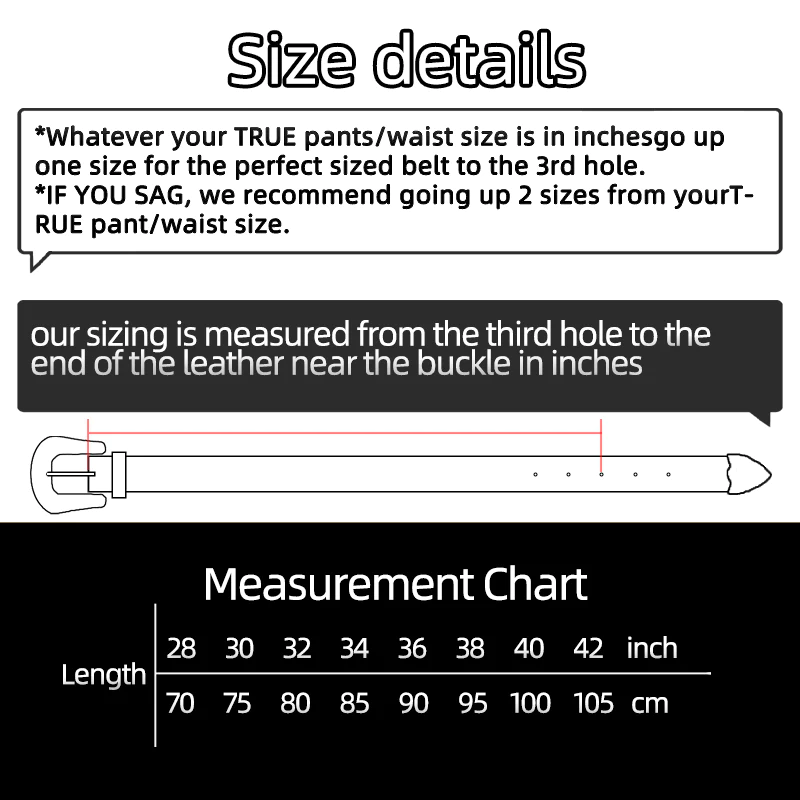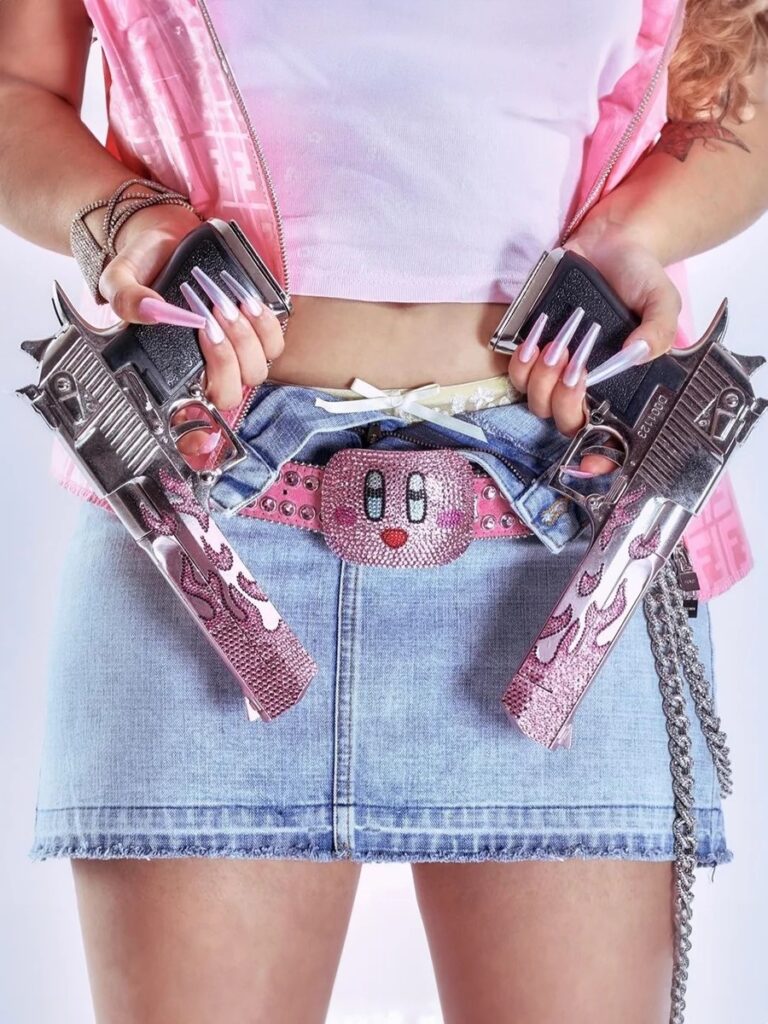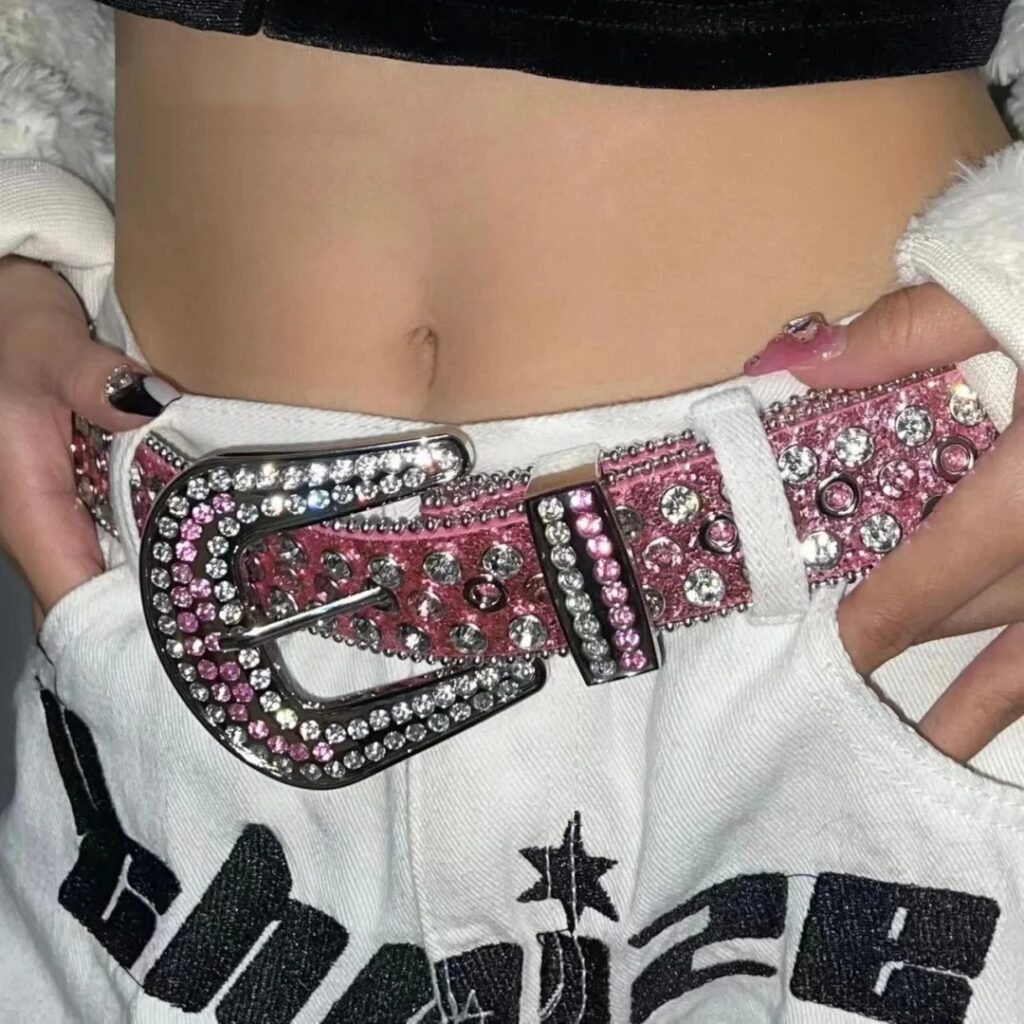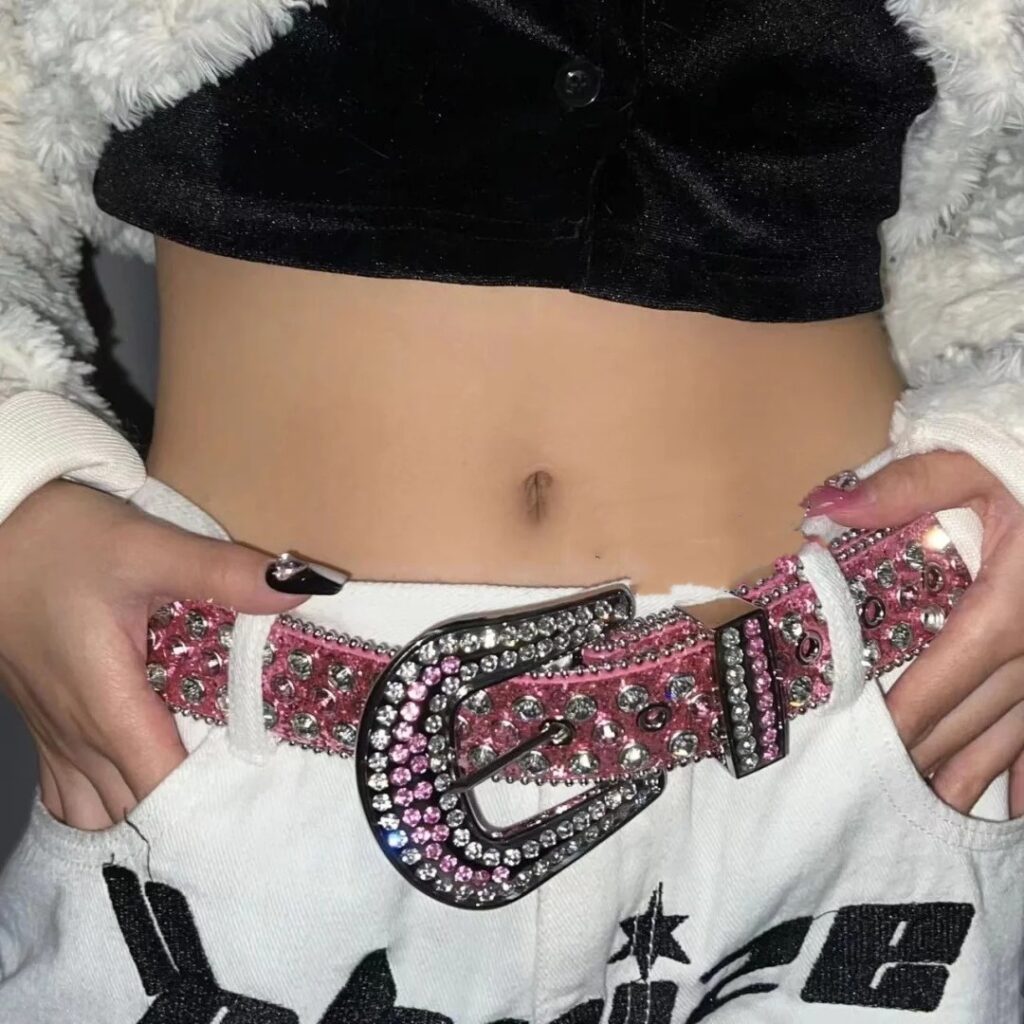Introduction: How to measure belt size
Ever found yourself struggling to find the perfect belt size? 🤔 It’s more common than you think, especially with BB belts. Getting the right size isn’t just about comfort—it’s about making sure your belt looks and feels great.
BB belts have a unique sizing system that can be confusing at first. But don’t worry, we’re here to simplify it for you. In this guide, we’ll break down everything you need to know about BB belt sizing, helping you avoid costly mistakes and find the perfect fit effortlessly. Ready to master the art of choosing the right BB belt? Let’s dive in!

Understanding BB Belt Sizing
When it comes to BB belts, figuring out the right size can feel like solving a puzzle. Unlike your standard belts, BB belts have their own unique sizing rules that can catch you off guard if you’re not prepared. Here’s the lowdown on how BB belt sizing differs and why it’s crucial to get it right.
Choosing the Right BB Belt Size
BB belts aren’t your everyday accessories. They’re designed with a sizing system that demands attention to detail. Here’s why: instead of matching your waist measurement exactly, you typically need to go up 2-3 sizes. This might seem counterintuitive at first, but it ensures a comfortable fit that sits just right where it matters most.
Why Size Up?
Imagine your favorite pair of jeans. They fit snugly, but you’ve got room to breathe. That’s the philosophy behind BB belts. Sizing up allows for flexibility and comfort, preventing that awkward squeeze when you sit down or move around. Plus, it ensures your belt doesn’t just hold up your pants—it complements your style effortlessly.
Nailing the Perfect Fit: Finding Your BB Belt Size
Step-by-Step Guide to Measuring Your Waist
Getting the right belt size starts with an accurate waist measurement. Here’s how you can do it:
- Grab a Tape Measure: Use a flexible measuring tape for the best results.
- Measure at Your Waist: Wrap the tape measure around your waist where you normally wear your belt. Make sure it’s snug but not too tight.
- Take Note of the Measurement: Write down the number you get. This is your actual waist size.
Using the BB Belt Size Chart
Once you have your waist measurement, it’s time to use the BB belt sizing chart. Here’s how:
- Locate Your Measurement: Find your waist size on the chart.
- Add 2-3 Sizes: According to BB’s recommendations, add 2-3 sizes to your waist measurement. This ensures the best fit for comfort and style.
- Choose the Right Size Range: Look for belts within this adjusted size range.
Practical Tips for Choosing the Right Belt Size
- Consider Your Wardrobe: Think about what you’ll be wearing with the belt. Thicker clothing might require a slightly larger size.
- Style Preferences: Decide how you like your belt to fit. A little extra length can be stylish for a casual, relaxed look.
- Adjustability: A larger belt offers more room for adjustments, so you can get the fit just right.
Example
If your waist measures 34 inches:
- Add 2-3 inches to get a size range of 36-38 inches.
- Check the sizing chart and choose belts within this range for the best fit.

Final Thoughts
- Try Different Sizes: If possible, try a few different sizes to see what feels best on you.
- Read Reviews: Look for customer feedback about sizing for the specific brand or model.
- Don’t Stress: Remember, getting the right size might take a couple of tries. Many stores have great return policies to help you find your perfect fit.
By following these steps, you’ll be well on your way to finding a BB belt that fits just right, enhancing both your comfort and style. A well-fitted belt isn’t just practical—it’s a fashion statement that ties your whole look together.
Seeing Is Believing: Real-Life BB Belt Size Demonstrations
Watch How Different Belt Sizes Fit
Sometimes, seeing a product in action is the best way to understand how it works. In our video demonstration, we showcased various BB belt sizes on models with different waist measurements. Here’s a detailed breakdown of what we found:
Size 34 Belt
- Model’s Waist: 32 inches
- Fit: Snug and comfortable, offering a firm hold without being too tight.
- Perfect For: Those who like a more tailored, secure fit that keeps everything in place.
Size 36 Belt
- Model’s Waist: 34 inches
- Fit: A bit roomier, providing extra space for comfort and flexibility.
- Perfect For: Individuals who prefer a looser, more relaxed fit or need the extra length for layering over thicker clothing.
Practical Insights from the Demonstration
- Versatility: Both sizes showed great versatility in terms of styling options. The snug fit of the size 34 is ideal for a polished look, while the roomier size 36 is great for casual, laid-back outfits.
- Adjustability: Each belt offered multiple holes for adjusting the fit, allowing each model to find their perfect comfort zone.
Takeaways
- Size 34: Best for those with a waist measurement slightly smaller than the belt size, ensuring a snug, secure fit.
- Size 36: Ideal for those with a waist measurement that matches the belt size, or for those who want a bit more room to move.
Final Thoughts
Seeing these belts in action really highlights the importance of choosing the right size based on your personal preferences and needs. Whether you like a snug, secure fit or a more relaxed, comfortable style, understanding how different sizes work on different body types can help you make the best choice. Remember, a well-fitted belt not only looks emphasizesgreat but also feels great, making all the difference in your everyday wear.

How Material Affects BB Belt Size and Fit
Understanding Different Belt Materials
The material of your BB belt plays a significant role in how it fits and feels. Here’s a closer look at how various materials can influence your belt size and overall comfort.
Leather Belts
- Stretch Over Time: Leather belts tend to stretch slightly as they break in. What starts as a snug fit can become more comfortable with wear.
- Initial Fit: Choose a size that feels snug but not tight to allow for this natural stretching.
Fabric Belts
- Less Flexibility: Fabric belts generally have less give compared to leather.
- Precise Sizing: It’s crucial to get the sizing right from the start, as these belts won’t stretch much over time.
Studded and Decorative Belts
- Rigidity: Belts with studs or heavy decorations are often less flexible.
- Accurate Sizing: Ensure you choose the correct size because these belts won’t adjust to your body as much as plain leather or fabric options.

Practical Tips for Choosing the Right Material and Size
- Consider the Stretch: For leather belts, account for a bit of stretching. If you’re between sizes, it might be best to go for the smaller one.
- Prioritize Comfort: For fabric belts, prioritize comfort and accurate sizing since they won’t stretch.
- Check Flexibility: When buying studded or decorative belts, make sure to try them on if possible. These belts need to fit well from the start since they offer little flexibility.
Example Scenarios
- Leather Belt: If your waist is 34 inches, you might start with a size 34-36 belt. It will be snug at first but will stretch to a perfect fit.
- Fabric Belt: For a 34-inch waist, you should get a 34-36 size, ensuring it fits well immediately.
- Studded Belt: With a 34-inch waist, go for a 36-inch belt to accommodate the lack of stretch and ensure comfort.
Final Thoughts
Choosing the right material for your BB belt is just as important as getting the size right. Understanding how each material behaves will help you make a more informed decision, ensuring that your belt is not only stylish but also comfortable and functional. By considering these factors, you can find the perfect BB belt that fits just right and complements your wardrobe beautifully.and


BB Belt Size FAQ
How to Measure Belt Size?
Use a Flexible Tape Measure: Wrap it around your waist where you wear your belt.
Note the Measurement: Make sure the tape is snug but not tight.
Add Extra Length: For BB belts, add 2-3 inches to your waist size. For example, if your waist is 32 inches, look for a 34-35 inch belt.
What Size Belt Should I Buy for a 32/34 Waist?
If you have a 32-inch waist, buy a belt that is 34-36 inches. This allows for comfort and adjustability, ensuring a good fit.
For a 34-inch waist, choose a belt that is 36-38 inches. This gives you extra room for flexibility and comfort.
What Does 110 Mean in Belt Size?
A 110 belt size refers to the length in centimeters. Converting to inches, a 110 cm belt is about 43 inches, suitable for waists around 40-42 inches.
By following these tips, you can find the perfect BB belt size for a comfortable and stylish fit. Always double-check your measurements and the belt material before purchasing.
Keeping Your BB Belt in Top Shape: Care and Maintenance Tips
Leather Belts: Keeping Them Supple
Leather belts require a bit of extra love to stay looking their best. Here’s how you can maintain them:
- Apply Leather Conditioner: Regularly apply a quality leather conditioner to keep the belt supple and prevent cracking.
- Avoid Excess Moisture: Keep your leather belt away from excessive moisture, which can cause damage.
- Store Properly: Hang your belt or store it flat to maintain its shape.
Fabric Belts: Easy Cleaning Tips
Fabric belts are generally low-maintenance, but they still need proper care to last:
- Spot Clean: Use a mild detergent to spot clean any stains or dirt. Avoid soaking the belt entirely.
- Air Dry: Let the belt air dry naturally. Avoid using a dryer, as the heat can damage the fabric.
- Store Neatly: Roll or hang your fabric belt to prevent creasing.
Decorative Belts: Protecting the Embellishments
Decorative belts with studs or other embellishments need special care to keep them looking great:
- Handle with Care: Avoid rough handling to prevent the embellishments from coming loose or getting damaged.
- Clean Gently: Use a soft cloth to gently clean the surface. Avoid using harsh chemicals that can damage the decorations.
- Store Carefully: Keep decorative belts in a separate compartment or bag to protect them from scratches and other damage.


Practical Tips for All Belt Types
- Regular Inspections: Check your belts regularly for signs of wear and tear. Address any issues promptly to extend their lifespan.
- Avoid Overstretching: Don’t overstretch your belt, as this can cause it to lose its shape and integrity.
- Rotate Your Belts: If you have multiple belts, rotate their use to reduce wear and tear on any single belt.
Final Thoughts
Maintaining your BB belt doesn’t have to be a chore. With these simple care and maintenance tips, you can keep your belts looking great and lasting longer. Whether it’s leather, fabric, or decorative, each type of belt has its own care needs. By following these guidelines, you’ll ensure your BB belt remains a stylish and functional part of your wardrobe for years to come.
Wrapping It Up: Ensuring Your BB Belt Fits Perfectly
Let’s quickly recap what we’ve covered about finding the right BB belt size. First, knowing your waist measurement and adding 2-3 sizes is key to getting the perfect fit. We’ve also looked at how different materials like leather, fabric, and decorative belts can affect your sizing and comfort. Plus, we’ve shared practical tips on caring for your belts to keep them looking great.
Remember, getting the right belt size is crucial for both comfort and style. Always double-check your measurements and consider the material of the belt. Don’t be afraid to try a few sizes to see what works best for you. Happy shopping, and may your next BB belt be the perfect fit!

